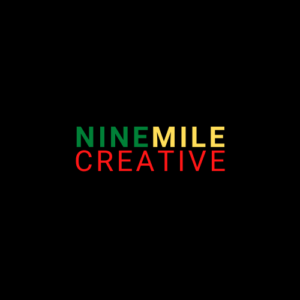
What’s the Difference? And when should I invest in each?
As the founder of a socially responsible business, you know that marketing is essential for the growth and success of your company. But with so many different marketing strategies out there, it can be difficult to know which ones to focus on. In this blog post, we’ll explore the differences between two popular marketing strategies: brand marketing and direct response marketing.
Entrepreneurs mistake the two all the time and it’s important to know the difference as you’ll be able to measure success and optimize more accurately (getting more sales!)


Wanna figure out which strategy works BEST for your business?
Shoot us a message, we’re happy to answer any questions for you.
“Stopping advertising to save money is like stopping your watch to save time.”
Henry Ford
Brand Marketing
Brand marketing is all about creating a strong brand identity that people will remember and recognize. The goal is to build brand awareness, trust, and loyalty among your target audience. This type of marketing is often associated with large corporations that have massive budgets for TV commercials, billboards, and other forms of traditional advertising.
However, brand marketing is not just for big businesses. Even small businesses can benefit from building a strong brand identity. By creating a consistent and memorable brand image, you can differentiate yourself from your competitors and create a lasting impression on your customers.
“Your brand is a story unfolding.”
Jonah Sachs
Direct Response Marketing
Direct response marketing is a more targeted approach to marketing. The goal is to get an immediate response from the consumer, whether it’s making a purchase, filling out a form, or taking some other action. This type of marketing is often associated with online ads, email marketing, and other forms of digital marketing.
Direct response marketing is all about measuring the success of your marketing efforts. By tracking metrics like click-through rates, conversion rates, and cost per lead, you can determine the ROI of your campaigns and make adjustments as needed.
Which One is Right for Your Business?
Both brand marketing and direct response marketing have their pros and cons, and the best strategy for your business will depend on your goals, budget, and target audience.
If you’re looking to build a strong brand identity and create long-term customer loyalty, brand marketing may be the way to go. However, if you’re looking to get an immediate response from your audience and measure the success of your campaigns in real-time, direct response marketing may be a better fit.
Ultimately, the most effective marketing strategy is one that combines both brand marketing and direct response marketing. By building a strong brand identity and leveraging targeted, measurable campaigns, you can create a powerful marketing mix that drives growth and success for your socially responsible business.
Why It’s Important Not to Confuse Brand Marketing for Direct Marketing in Terms of Expected Results
While both brand marketing and direct response marketing are valuable strategies, it’s important not to confuse them in terms of the expected results. Brand marketing is a long-term strategy that builds awareness and loyalty, while direct response marketing is focused on generating an immediate response. If you expect immediate results from brand marketing, you may be disappointed. It takes time to build a strong brand identity and see the benefits of brand marketing.
On the other hand, if you focus solely on direct response marketing and neglect brand marketing, you may miss out on the long-term benefits of building a strong brand identity. Direct response marketing can generate quick wins, but it’s not a sustainable strategy on its own. Without a strong brand identity, it’s difficult to differentiate yourself from your competitors and build lasting customer loyalty.
Why It’s Important to Invest in Direct Response Marketing to Get Quick Wins While Building Brand Marketing in the Background
Investing in direct response marketing can help you achieve quick wins while building brand marketing in the background. Direct response marketing can generate immediate leads, sales, and conversions, providing a boost to your business. By focusing on measurable metrics like click-through rates and conversion rates, you can track the success of your campaigns in real-time and make adjustments as needed.
At the same time, it’s important to invest in brand marketing to build long-term awareness and loyalty. While direct response marketing can generate quick wins, it’s not a sustainable strategy on its own. By investing in brand marketing, you can create a strong brand identity that sets you apart from your competitors and builds lasting customer relationships. This will help you achieve sustainable growth over the long term.
Conclusion
In conclusion, the difference between brand marketing and direct response marketing comes down to the goals and approach of each strategy. By understanding the unique benefits of each type of marketing, you can create a tailored marketing mix that works best for your business.
While both brand marketing and direct response marketing are valuable strategies, it’s important to understand the differences between the two in terms of expected results. It’s also important to invest in both strategies to achieve quick wins and sustainable growth over the long term. By building a strong brand identity through brand marketing and leveraging targeted, measurable campaigns through direct response marketing, you can create a powerful marketing mix that drives growth and success for your socially responsible business.













